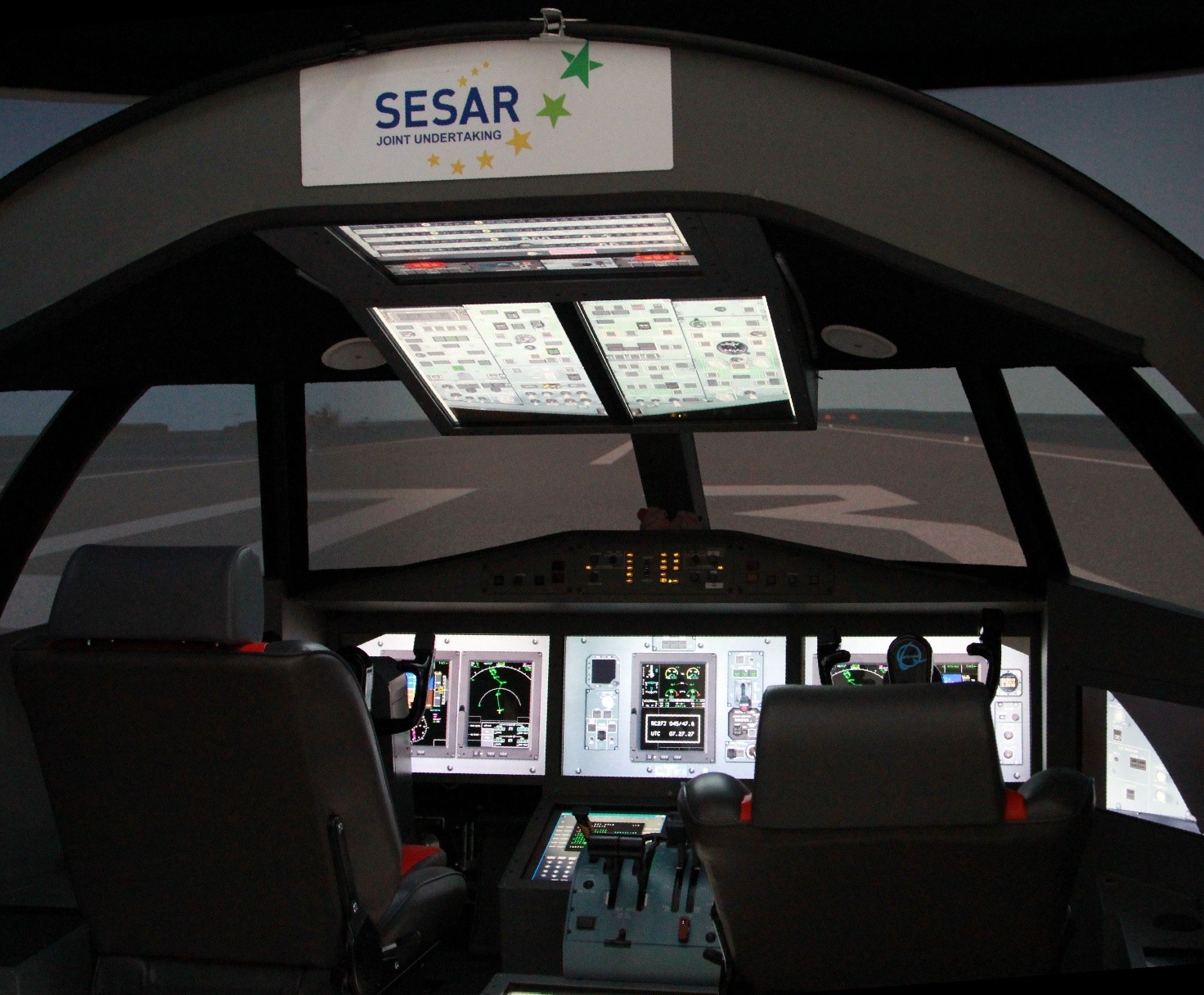This article is an interview with Ginevra Bressani from Leonardo, highlighting the progress made in the first validation phase of the Airborne Digital Assistant features.
The JARVIS project is developing an innovative Airborne Digital Assistant (AIR-DA), designed to revolutionize the interaction between pilots and flight systems. The AIR-DA aims to enhance situational awareness and reduce pilot workload through an intuitive interface and advanced voice commands. This intelligent system can assist pilots in various flight phases, from planning to emergency management, contributing to safer and more efficient aviation.
We are excited to provide an update on the first steps of the AIR-DA’s validation phase. This stage is essential for testing the AIR-DA’s reliability and effectiveness in simulated scenarios.
Our validation will take place within a sophisticated environment utilizing the Leonardo GRA (General Regional Aircraft) flight simulator (in the photo above). This setup combines real and virtual components, including touch screen displays, and leverages proprietary simulation software. This comprehensive environment will allow us to meticulously test the Collins AIR-DA’s integration and performance. The Leonardo General Regional Aircraft (GRA) research simulator is a simulation platform capable of providing a realistic, high fidelity, real-time, man in the loop simulation. This device is located at the Leonardo Turin premises. The GRA simulator is derived from a typical commercial turboprop aircraft with characteristics and performances that have been implemented in order to comply with the research requirements.
A mixed team composed of specialists from Collins Aerospace and Leonardo has conducted the first integration tests, achieving successful exchange of data between the AIR-DA and the flight simulator, verifying that information is transmitted in the correct format. This ensures accurate and reliable communication between the systems.
The AIR-DA’s map visualization has been successfully validated against the simulator’s actual position. This confirms that the AIR-DA provides accurate and real-time spatial awareness. Crucially, the AIR-DA has demonstrated successful management of simulated failures generated by the Leonardo’s simulator. This highlights its ability to handle unexpected events and provide effective support to pilots. The successful display of stand-by frequencies sent by the AIR-DA on the Leonardo simulator’s displays has been verified. This ensures seamless integration with existing communication systems. The AIR-DA’s Audio Manager has been rigorously tested, demonstrating successful behavior in response to the Push-To-Talk (PTT) button press on the Leonardo’s simulator. This validates the system’s audio interface and its responsiveness to pilot commands.
These successful integration activities are crucial steps towards ensuring the AIR-DA’s readiness for future validation activities. We’re committed to rigorous testing and refinement to deliver a robust and effective digital assistant that enhances efficiency in the cockpit. Stay tuned for further updates as we progress through this vital phase.

